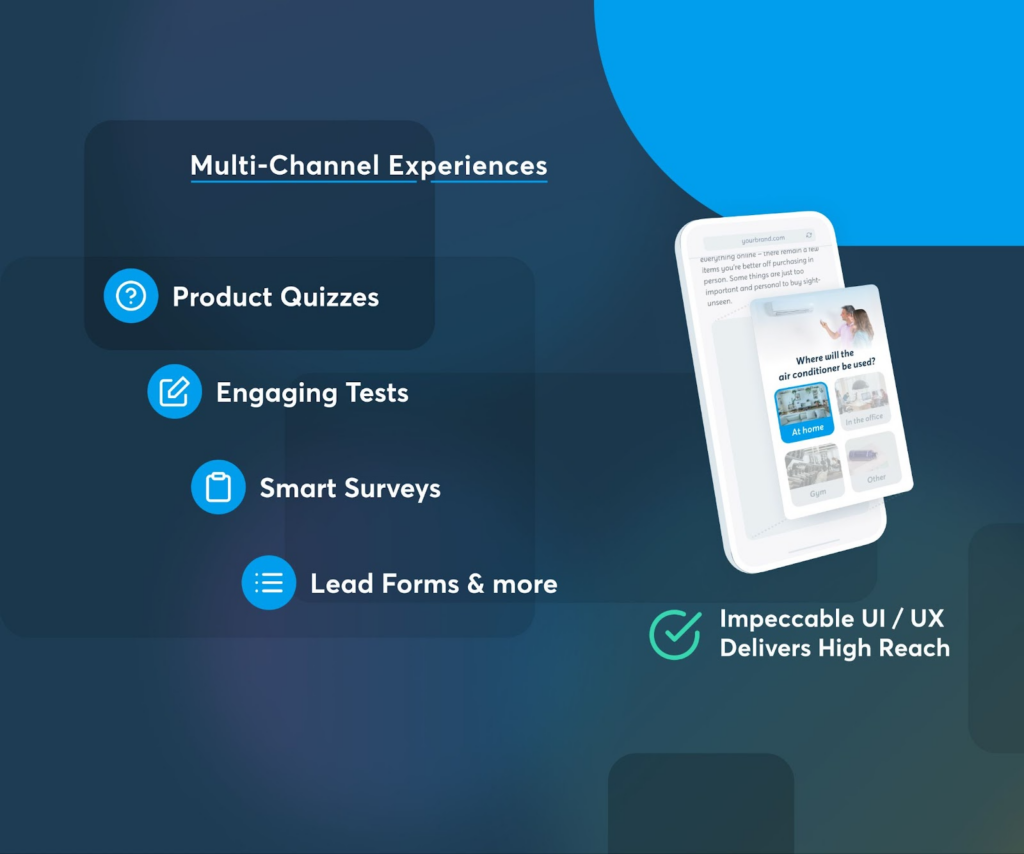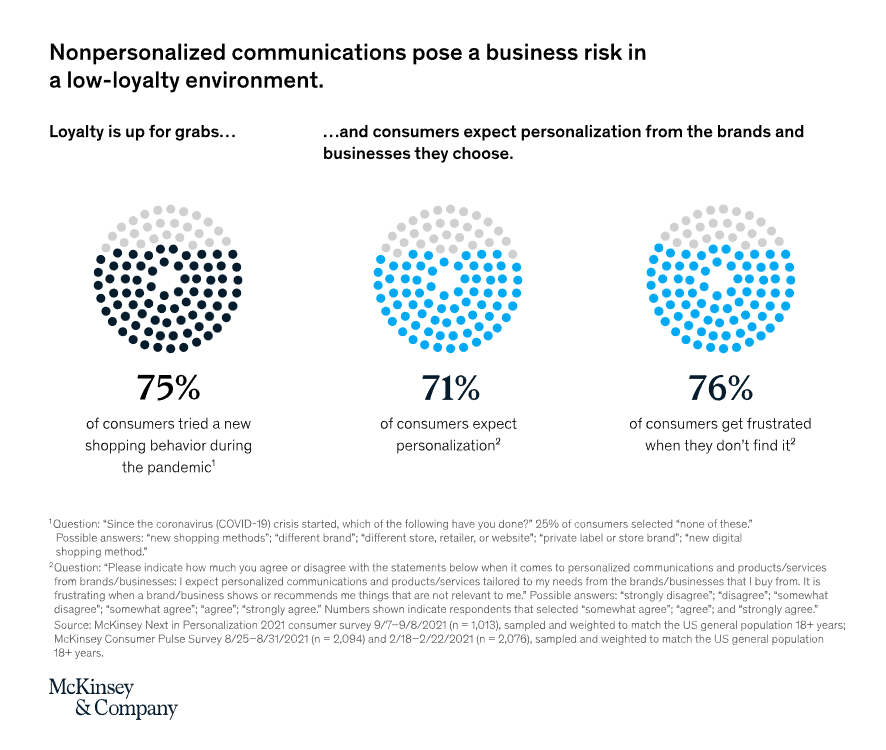
A Guide to E-Commerce Personalization: Key Strategies & Software Adaptation
Best practices for e-commerce personalization
E-commerce personalization plays a crucial role in getting to know your customers better and providing them with the best possible experience. Personalization can help you understand your customers’ preferences and details, such as their shopping habits, purchase history, and demographics. By gathering these insights, you can significantly influence their decision to buy from your brand over your competitors. According to a McKinsey report, 76% of consumers are likely to purchase from a brand that offers personalized experiences, and 78% are likely to make repeat purchases. Furthermore, 78% of customers are more inclined to recommend a brand to their friends and family, which can lower customer acquisition costs and improve customer retention rates.
Onboarding: Capturing Essential Customer Details
To kickstart your e-commerce personalization efforts, it’s vital to capture important customer details right from the beginning. Onboarding surveys serve as an effective method to gather valuable insights about your customers. You can ask questions about their interests, their preferred shopping channels, and their preferred communication methods. By gathering these details, you can tailor your marketing messages and product recommendations to suit their needs better. Check out this onboarding video to learn more:
Product Quiz / Product Finder: Increasing ROI with Personalized Recommendations
Consider utilizing a no-code Product Quiz or Product Finder tool to cater to your customers’ needs and preferences. These tools enable you to translate complex product features into consumer-friendly language and provide personalized recommendations in seconds. The recommendation engine can identify the best-suited products from a vast catalog. By using no-code product finders, you can create a seamless online customer journey without the need for coding or complex integrations. Furthermore, you can use this tool to gain insights into your customers’ preferences and adjust your product offerings accordingly. Click here for more!
Gamification / Engaging Content: E-Commerce Personalization by Increasing Customer Engagement
Boost brand loyalty by engaging your customers through gamification and interactive content. Gamification strategies offer opportunities to create interactive experiences that captivate and retain customers. You can use gamification to create loyalty programs, referral programs, and contests that motivate customers to engage with your brand. Check out these videos on gamification:
Surveys: Extracting Insights for E-Commerce Personalization
Transform your data into actionable insights to bring the in-store experience to the online realm. Leverage recommendation tools like product quizzes and finders to gain valuable insights from customer surveys. These insights can drive your personalization efforts and optimize the online shopping experience. You can ask questions about their shopping habits, preferred payment methods, and preferred delivery options.
CRM Strategy: Building Customer Loyalty
Foster customer loyalty by implementing a robust Customer Relationship Management (CRM) strategy. A CRM system can help you manage your customer interactions and data, track customer behavior, and identify opportunities to improve customer engagement. Explore how Poltio can assist you in developing a customer loyalty strategy through their blog: Click here to read!
Moreover, you can use CRM data to personalize your marketing messages and product recommendations.
Omni-Channel Strategy: Delivering Consistent Experiences
Craft an effective omni-channel strategy to ensure consistent and personalized experiences across various touchpoints. By integrating data from different channels, you can provide a seamless customer journey that spans over multiple devices and platforms. Consider leveraging real-time marketing tools like Moengage to deliver timely and relevant messages to customers. You can use Moengage to send personalized push notifications, in-app messages, and emails based on their past behavior and preferences.

NPS Strategy in E-Commerce Personalization
Measure customer satisfaction and loyalty with NPS (Net Promoter Score) surveys. Gather feedback and improve your offerings to better meet your customers’ needs. You can use NPS surveys to ask customers how likely they are to recommend your brand, what they like about your brand, and what you can improve.
Develop a comprehensive e-commerce personalization strategy by integrating key elements such as onboarding, product quizzes, gamification, surveys, CRM, NPS, and an omni-channel approach. By leveraging these strategies and incorporating the right software adaptations, you can provide personalized experiences that drive customer engagement, boost loyalty, and ultimately increase conversions.
E-mail us at info@poltio.com or login try it for free to join the data revolution!

